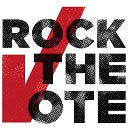What is Participatory Budgeting? An Explainer
By Kosoko Jackson
Participatory Budgeting — or PB — is democracy in action, though many of us (cough — including myself one month ago — cough) didn’t know how it works. PB gives us the opportunity to prioritize issues in our community through the budget process, and more importantly: it can help decide what programs need more funding or show when to divert funding. More importantly, Participatory Budgeting allows communities to try innovative and experimental ways to bring hidden community priorities to the forefront of discussions.
What even is it?
Usually done annually, community members decide, by voting, discussions, reviewing information, and other democratic methods, how funding in their community should be allocated. PB is the epitome of involvement, and is a great way to bridge community engagement from the local level, but to also inform public officials and government individuals about the will and desires of the people. It’s an inclusive project that puts power, back into the hands of the people.
Here’s a helpful infographic to show you the process:
PB is not just a new or niche event, either. It’s been done all over the world, including in youth-only PB in Boston and Seattle, in Phoenix High Schools, and with over 400 million Euros in Paris, just to name a few places.
Is PB Successful?
For many (most) of you, you’ve never heard of participatory budgeting before. And goes against everything you’ve been conditioned regarding finances and budgeting. That only the elected leaders of your community should have access to budgeting. That they were selected to know how to handle finances that best suit your interests, and that you should trust them.
We’re not saying you shouldn’t. But getting involved not only builds your knowledge base, but helps your elected officials — and you — be more accountable to one another.
Additionally, there has been great success in the use of participatory internationally. Brazil, is a great example.
Brazil has been using PB since 1990. And since then, more than 120 of Brazil’s largest cities have implemented PB. The results are impressive to say the least, as cited below:
“Municipal governments that adopted Participatory Budgeting spent more on education and sanitation and saw infant mortality decrease as well. We estimate cities without PB to have infant mortality levels similar to Brazil’s mean. However, infant mortality drops by almost 20 percent for municipalities that have used PB for more than eight years — again, after accounting for other political and economic factors that might also influence infant mortality. The evidence strongly suggests that the investment in these programs is paying important dividends.”
Many issues that Brazil’s cities were able to tackle do not apply to US cities. But the major topics, such as education, that were positively affected in Brazil, are topics that Americans care about and want to see changed. Participatory Budgeting can help do that.
Why should I champion for Participatory Budgeting in my community?
PB allows for individuals who are usually voiceless to have their voices heard. By handing control over some part of a budget, issues that are usually pushed to the wayside, aren’t ignored. Issues such as homelessness, LGBT
Youth equality, rehabilitation procedures vs. prison reform et. Many of these issues, are issues young people, and marginalized people passionately care about. PB allows all of those issues — and all people willing to participate — to have a fighting chance. PB is also open to everyone in the community, meaning those over and under eighteen years old, undocumented individuals, and citizens with incarceration records, can have a say in their community.
When we all can vote, when we all have a say, our country functions better. When we’re all informed, our country is stronger. And when we all feel like our voices are heard, our country, becomes more representative. As the most diverse generation in our nation’s history, Participatory Budgeting may just be the solution your community needs to bridge the gap between representation and action.
Want to learn more? Visit the Participatory Budgeting Project.
